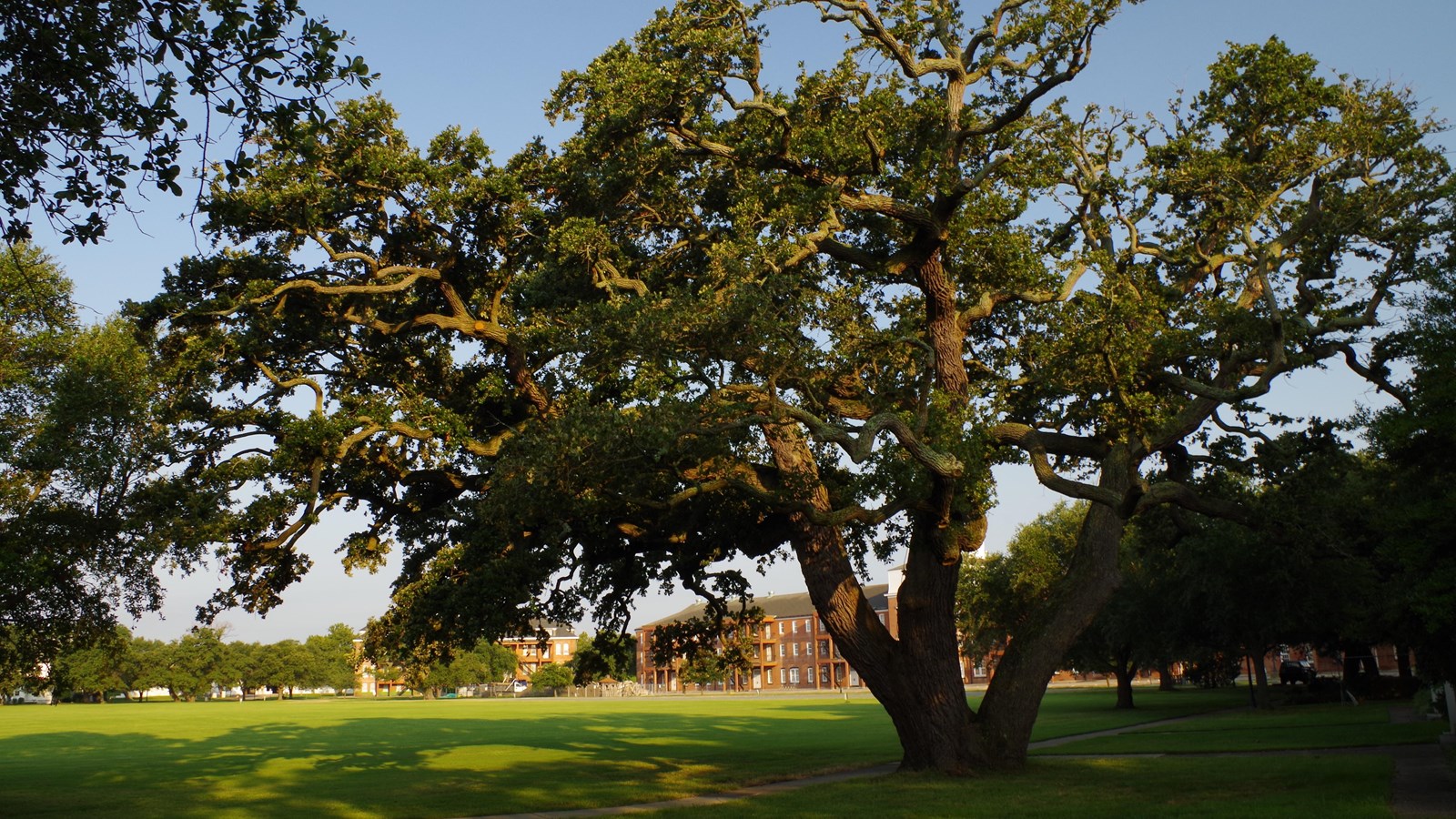Last updated: August 6, 2024
Place
Algernourne Oak

NPS Photo / Aaron Firth
Cellular Signal, Trash/Litter Receptacles, Wheelchair Accessible
The Algernourne Oak has firm roots in the American past. The impressive live oak tree stands on the eastern end of Fort Monroe’s parade ground. It is about 500 years old. It sprouted when Kecoughtan people foraged and fished at Old Point Comfort. It survived landscape-changing storms. It saw the arrival of the first English colonists, then the first enslaved Africans. It stood as Great Britain threatened American independence. The US Army built its largest stone fort around it. Men and women men sought freedom from slavery by it. The Algernourne Oak became part of Fort Monroe National Monument in 2011. This storied resident of Fort Monroe still watches as American history unfolds.
